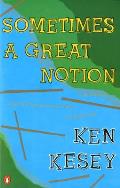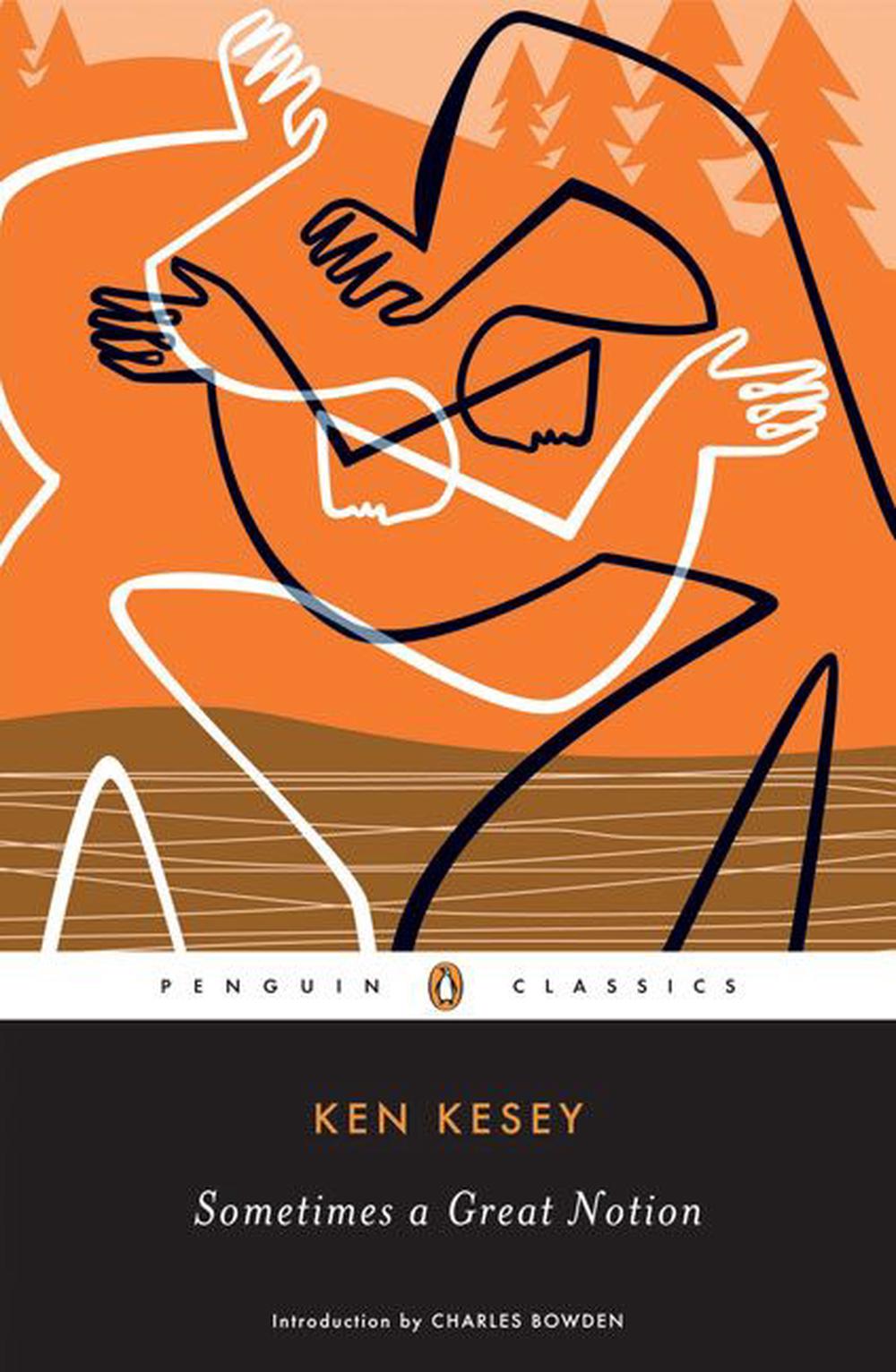


As if it were needed to add to the edginess, there is a woman involved. He has come home, ostensibly to help with fulfilling the contract, but mostly for the personal satisfaction of proving he is able to dethrone his older brother. He has a decided problem with his older brother, and much of the angst and tension is heightened by the silent duel Lee is constantly fighting in his mind.

Youngest son, Leland, is a college kid, raised in the city, away from this world, since the age of twelve. Everyone is against them the town is against them. When all the logging operations unionize and go out on strike, the Stamper’s non-union business takes up the major contract in the area, defying the strikers. Henry Stamper is the patriarch of the clan and son, Hank is the heart and the driving force. They don’t ask for anything and they give little thought to anyone outside their family circle. The Stamper family are loggers and rugged individualists. People fade up the stairs, but to dream of each other’s dreams of days coming gone and nights past coming of hard sun-rods crisscrossing back and forward across outspreading circles of water, meaningless-seeming… The prose is beautiful, but there is also a touch of the poetic in his writing, as I think is demonstrated in this passage:īut the breath of memory still plucks such instances, setting the whole web shaking. It was as close to being on an Oregon river in the winter as I would ever want to come it was closer than I would ever want to get to a logging operation. I found his descriptions and language beautiful. But read on! When you have settled into the rhythm of what he is doing, he begins to tell a more linear tale and it becomes obvious to you who is speaking and why it is important not to follow this story through the eyes of only one character or even an omniscient being. He also does nothing as mundane as telling a story in a linear fashion, oh no, he bounces time frames almost as much as he does characters in the beginning. Beginning this book can be off-putting, because there isn’t a narrator for the story-Kesey bounces around inside the heads of a dozen characters, switching without warning from one to the other, and making you dizzy with trying to sort out whose thoughts you are following. One of the things I know is that Ken Kesey was a one of a kind writer, who knew his craft and invented his own style. To know a thing you have to trust what you know, and all that you know, and as far as you know in whatever direction your knowing drags you. Clearly a reflection of the 1960s creative stream of conscience narrative writing style that Jack Kerouac used in "On The Road." ( ) I understand why this has been reviewed as a "Classic" on many levels. The characters are so well defined as most of this comes from their interactions with each other and by their own voice that Kesey weaves into the narrative. It's one of those books that I am glad I 'pushed through' to finally read in completion, even though it took picking up more than a couple of times. There are seminaries I found in this novel and John Steinbeck's "East of Eden," with the struggle between two bothers, the western independent spirit of working on the land, and the plot lines that lead to tragic ending for key characters. I remember bits and pieces of the film and the All-star cast that was done in 1970-71, but the book is so much more nuanced with background and character developed. I was only reading about 30 pages or so a day until I read the last 150 in day because it finishes in such a flurry. It was hard a first to get into this book with the way Kesey wrote it, switching characters paragraph my paragraph without attribution. I picked it back up after retiring from the military. Funny thing how a book can sit on shelf for three decades. I read the first part and put it down thinking I would get back to finishing it.

I bought this book nearly 30 years ago when I first moved to Oregon the late summer of 1992.


 0 kommentar(er)
0 kommentar(er)
